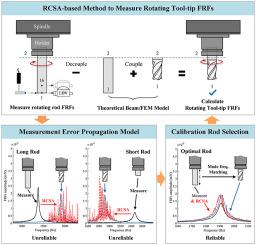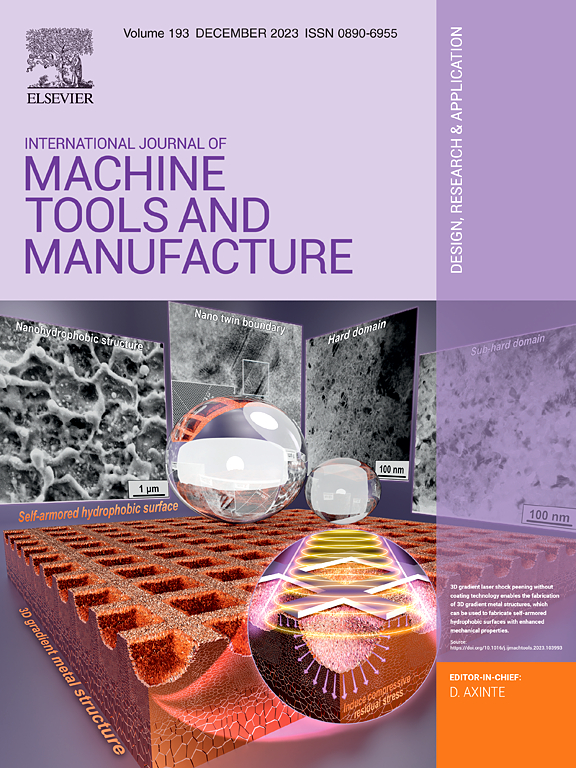Calibration rod selection strategy in RCSA-based method for reliable calculation of milling tool-tip FRFs in rotating conditions
Abstract
The measurement of milling tool-tip frequency response functions (FRFs) in rotating conditions is challenging in practice. Methods based on the receptance coupling substructure analysis (RCSA) can obtain rotating tool-tip FRFs using normal modal test devices; thus, they have received extensive attention in the research community. The typical RCSA framework first adopts a calibration rod for measuring rotating FRFs. Then, it analytically calculates the desired tool-tip FRFs through the RCSA theory. As the calculation process involves matrix inversion, high-quality FRF data is required. However, experimentally measured FRFs in rotating structures contain severe noise, leading to an unreliable calculation. This paper presents a novel error analysis model to investigate the propagation mechanism of measurement errors in the typical RCSA framework. Results show that measurement errors would cause errors in the length of the coupled substructure while introducing scaling effects. The calibration rod is found to be vital for RCSA calculation reliability. The patterns of the calculation error are opposed when adopting a short or long calibration rod. Then, a calibration rod selection strategy is proposed. The strategy makes full use of the high measurement quality near the resonance in rotating FRFs and achieves the dominant mode frequency matching between the clamped rod and the clamped tool by adjusting the rod length. Simulations validate the error analysis model and the calibration rod selection strategy. Experimental results also show that the optimal selection of the calibration rod could improve the calculation reliability of rotating tool-tip FRFs in the typical RCSA framework.


 求助内容:
求助内容: 应助结果提醒方式:
应助结果提醒方式:


